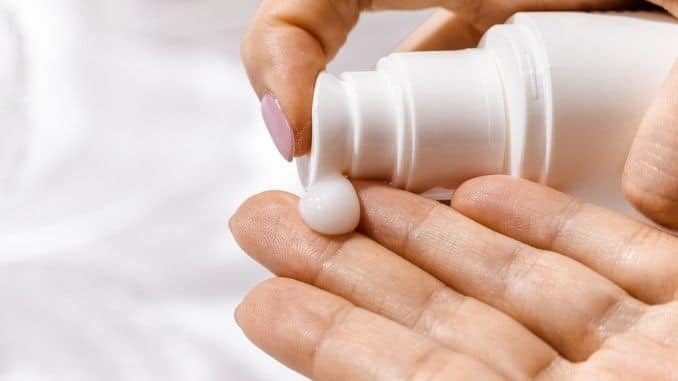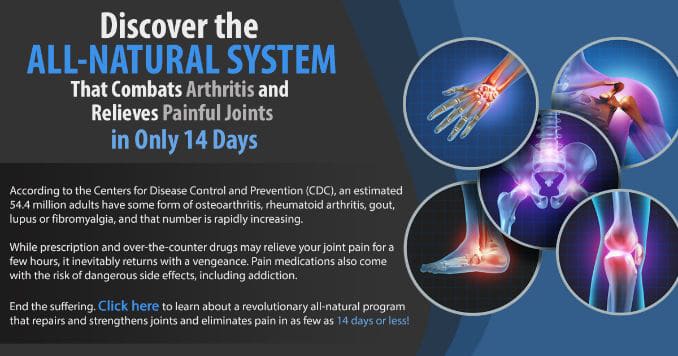
Pain is something that many of us battle with on a daily basis. Muscle pain, joint pain, fibromyalgia, headaches and more plague millions of people. The Centers for Disease Control and Prevention (CDC) states that in 2016, an estimated 20.4 percent of adults (50 million) had chronic pain, often linked to restriction in mobility as well as reduced quality of life.
Meanwhile, some of the oral medications we rely on to relieve pain are hurting us just as much as they’re helping us. Prescription opioid drugs like hydrocodone and codeine, for example, have been implicated in an epidemic of opioid misuse and overdoses. They can also come with bothersome side effects.
Even over-the-counter (OTC) pain medications like acetaminophen, aspirin, and ibuprofen can have damaging side effects when used regularly for many years. Taking too much acetaminophen can cause liver damage. Taking aspirin, ibuprofen or naproxen for long periods — all non-steroidal anti-inflammatory drugs (NSAIDs) — can result in stomach or kidney problems.
Thus, it makes sense to turn to other pain-relieving remedies when possible. One of the most popular alternatives is pain cream. Applying for a medicine topically significantly reduces the risk of side effects and long-term complications.
Below, we give you more information on pain creams, along with the latest research on their effectiveness.
What Are Pain Creams?
Pain creams, also called topical painkillers or analgesics, are solutions that are sprayed on, rubbed in or applied as patches onto the skin to help soothe painful muscles and joints. All of them are designed to help relieve pain, but they often contain different ingredients and are made to address varying conditions.
All topical pain relievers are designed to be absorbed through the skin. Although it may seem that your skin is an impenetrable barrier to your body — water slides right off it, after all — it’s a potential doorway to the body for certain types of solutions.
Absorption of substances through the skin depends on several factors, including the following. All of these can affect how well a topical pain-reliever works:
- The concentration of the ingredients
- How long the ingredients are in contact with the skin
- How soluble the ingredients are
- The physical condition of the skin where the pain reliever is applied
To be absorbed, a solution has to pass through the outer layer of skin or through the glands (also called hair follicles) or both. It then must pass through additional layers of the skin before it can affect the muscles or joints or before it enters the bloodstream or lymph to circulate to other parts of the body.
The good thing about the topical application of pain-relieving medications is that they allow the treatment to be localized to one particular area. When you take a pill, it circulates throughout the body, affecting every part of it. When you use a cream, however, it tends to stay closer to the area of application, which can reduce the risk of side effects.
Ingredients Often Used in Topical Pain Relievers
Certain pain-relieving ingredients are often used in topical pain relievers because they have a good reputation for being effective. These include the following:
- Capsaicin: This is a natural substance from chili peppers that gives them their heat. When applied to the skin, it’s natural properties help block pain messages to your nerves. Examples of these creams include Capzasin-HP and ZOSTRIX.
- Salicylates: A salicylate is a salt or ester of salicylic acid, which is the active ingredient in aspirin. Examples of creams with these ingredients include Aspercreme and BENGAY.
- Anesthetics: These produce a numbing sensation on the skin to help reduce pain. The most popular one is lidocaine, which is present in the LidoPatch and TOPICAINE.
- Counterirritants: This help produces other sensations on the skin that can help distract you from the pain. Substances like menthol and camphor make the skin feel hot or cold, which can temporarily reduce the sensation of pain. Examples of these products include Icy Hot and Biofreeze.
- Prescription NSAIDs: Whereas aspirin is an OTC NSAID, the United States Food and Drug Administration (FDA) recently approved a prescription NSAID called diclofenac for use in topical products made to ease joint pain. Examples of products containing this ingredient include Voltaren and Solaraze.
All of these ingredients are considered safe to use on healthy skin. If you have broken or irritated skin, it’s best not to apply these creams there as it may sting.
Do Pain Creams Really Work?
This is an area of continued debate. We know that topical solutions can and do penetrate the skin, but as to how well they work to relieve pain is unclear.
It makes sense that a pain cream should work. We’re combining the action of rubbing, which we do naturally when something hurts, with ingredients that are known to relieve pain. Then, there is the fact that most of these products do feel good at least temporarily. They may create a heating or tingling effect that can help us feel better for a short time.
However, as to whether these creams, gels, lotions, and patches are truly effective, we still don’t have enough evidence to be sure. Some studies indicate that NSAID creams and gels may work as well as their oral counterparts, and they can be particularly helpful for older people who can no longer tolerate taking the pills. Still, it seems that oral medication remains more effective.
Other ingredients like menthol and capsaicin seem to have minimal effectiveness. Menthol offers a cooling sensation that can be somewhat helpful, but it doesn’t address the underlying cause of the pain, which is inflammation, so it’s unlikely to provide any significant relief. Salicylates can address inflammation if they get where they need to go, but it’s still unclear whether topical application provides enough pain relief to be helpful in everyday life.
Capsaicin is a popular ingredient in pain-relieving creams, and its heating sensation can be distracting, but many products don’t have enough of it to be truly effective. People can also be bothered by the burning sensation — enough that they stop using the treatment. Finally, capsaicin is poorly absorbed by the skin, so it seems not enough of it gets to the problem area.
What About Compounded Pain Creams?
Custom-made compounded pain creams have recently come onto the market as an alternative to those that can be purchased ready-made in the store. These are customized pain creams designed to be completely individualized to one person. Many patients have paid top dollar for these creams, believing them to be more effective than traditional options. Unfortunately, a recent study cast doubt on that belief.
For the study, researchers looked at data from about 400 people ages 18 to 90. They divided them into two groups. One half of the group received a compounded topical cream, and the other half received a placebo cream.
The scientists then divided the participants into three groups according to their history of pain:
- Group 1 had neuropathic pain caused by disease or damage to the nerves like shingles or diabetes. These people used a cream containing ketamine, gabapentin, clonidine, and lidocaine.
- Group 2 had non-neuropathic pain caused by an injury to the tissue-like burns and sprains. They used a cream containing ketoprofen, baclofen, cyclobenzaprine, and lidocaine.
- Group 3 had mixed pain caused by damage to the nerves and tissues like back pain. They used a cream containing ketamine, gabapentin, diclofenac, baclofen, cyclobenzaprine, and lidocaine.
Before the study, all of the participants had pain scores of 4 or greater on a 0 to 10 scale and had suffered from their symptoms for an average of about 6.5 years. The participants applied the cream they were given three times per day and made entries into a pain diary twice a day.
After one month, the difference between the pain creams and the placebo creams was too small to be significant in all three groups. The researchers concluded, “Compounded pain creams were not better than placebo creams, and their higher costs compared with approved compounds should curtail routine use.”
The findings show that you are likely to get the same results from an OTC pain cream than a compounded one, so there’s no sense in paying the extra money for the compounded one.
You Can Still Try Pain Creams
If you’re suffering from chronic pain and you want to cut back on your use of pills, there’s no reason you shouldn’t try pain creams. They are safe to use and they may bring you some relief, so you have nothing to use but a few dollars. Despite the lack of evidence showing their effectiveness so far, the products are useful to many people, as shown by their consistent sales.
You can also try some other options, including the following:
- Hot and cold packs: Using one or the other or a combination of both can help to relieve sore muscles and joints. Cold is best for numbing sore areas, reducing swelling and reducing inflammation. Heat relaxes tight muscles and helps bring more blood to the area while decreasing the sensation of pain. Use either one for only 15 to 20 minutes at a time.
- Try cannabidiol (CBD): Lotions and gels with CBD have grown in popularity during the last few years. CBD comes from the hemp plant but does not contain any of the mind-altering compounds associated with marijuana. We don’t have enough studies yet to say for sure whether this work, but many people appear to find pain relief with them.
- Transcutaneous electric nerve stimulation (TENS) therapy: TENS delivers a painless electric current through electrodes attached to the skin. They can create a tingling feeling that lessens the intensity of pain without side effects.
- Yoga: Research suggests that yoga can help people with arthritis, fibromyalgia, migraine, low back pain and other types of chronic pain conditions.
- Herbal remedies: Although it’s best to always check with your doctor, herbal supplements can offer pain relief with fewer side effects than drugs. Some good options to try to include lavender, peppermint, ginger, feverfew, white willow bark, turmeric, cloves, rosemary, and eucalyptus.
- Other alternative care options: Acupuncture, meditation, biofeedback, progressive muscle relaxation, and guided imagery can all help you deal with chronic pain.
For help with arthritis and painful joints, make sure to check out our 14-Day Joint Recovery Quick Start Program, here!
.





